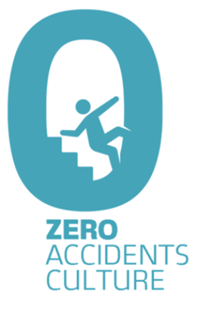So, You Want Culture Change?
 When one’s definition of culture is either systems, behaviours or values (or all three) the strategies (methods) that result reflect the definition. Changing values, systems and behaviours doesn’t change culture, it only affects these small elements of culture.
When one’s definition of culture is either systems, behaviours or values (or all three) the strategies (methods) that result reflect the definition. Changing values, systems and behaviours doesn’t change culture, it only affects these small elements of culture.
One’s methodology (worldview) drives one’s method and so we most often hear talk about culture change in safety in these three methods. This is usually the case because Safety doesn’t do anything that cannot be measured. Well, there’s a problem at the start. There will be little change to culture if the assumption of measurement is taken to the task. Very few things are more destructive to culture change than the assumption/addiction to measurement.
The first step in embracing culture change is getting rid of the silly assumption: ‘what can’t be measured can’t be managed’.
The next step to understand culture change is to embrace a Transdisciplinary approach to culture with a better aphorism: ‘not everything that counts can be counted’.
The best place to start in understanding and defining culture is in a broad approach to organizing and being. This is why the language of ‘ecologies’ is so important (https://safetyrisk.net/understanding-systems-and-ecologies-in-risk/ ). The language of ‘ecologies’ helps take us into the unmeasurable ‘habitus’ (Bourdieu), the collective unconscious and the autopoetic (self-generating) nature of social relationships (Socialitie). When we work in these spaces we move away from the empiricist notion of knowing that only thinks of meaning and purpose in terms of engineering and objects. Culture is best known and felt intuitively (Polanyi). When it comes to culture, science and engineering are not going to be much help. One needs to step outside of these disciplines and their assumptions if one ever hopes to understand and affect culture.
So, let’s take a look at just one of these ecologies (there are many more) and the part it plays in defining culture: Myth-symbolic ecology.
The construction of myth-symbol is foundational to human being and identity. When one studies Anthropology, Sociology, Social Psychology, History, Semiotics, Religious Studies or Ethnography one learns very quickly how symbol-myth is foundational to human ‘being’. Indeed, Jung’s studies of the collective unconscious demonstrates how all cultures and civilizations in history share a commonality in mythic-symbolic being. One can play around with systems, behaviours and values as much as one wants but if there is no attention paid to myth-symbols in organizing nothing will change in the collective unconscious.
Yesterday was Remembrance Day in Australia. A day when the end of World War One is remembered. On such a day, we see and hear mostly myth-symbol and none of it is measurable. When one engages in understanding myth-symbol, one has to step completely outside measurement sensibility. One also has to step outside of the brain-centric sense of ‘being’ projected onto human knowing by empiricist disciplines.
Science still has little idea of human memory (https://www.nature.com/articles/d41586-019-02211-5 ) and next to no idea of what makes for collective memory (https://www.scientificamerican.com/article/the-power-of-collective-memory/ ). The moment we move from empiricist definitions of knowing to trying to understand collective feeling, brain-centrism doesn’t help much (https://www.frontiersin.org/articles/10.3389/fpsyg.2012.00257/full ). Collective memory doesn’t happen IN people but BETWEEN people and holds more mystery than it does any sense of measured ‘knowing’. Sometimes memory is triggered by a song or poem and isn’t ‘known’ until it is heard. Even then such knowing is not cognitive but felt. The idea of a collective Mind is not about shared brain thinking but rather mutually experienced knowing between persons (https://pure.bond.edu.au/ws/portalfiles/portal/28738360/Collective_Memory_and_Forgetting.pdf ). None of this can make sense to engineering. Collective knowing between persons is not mechanical.
When we speak of culture and exclude the mysteries of myth-symbolic knowing we shift the conversation back to the insignificance of measurables. This is so clear in the populism of the ‘safetyculture’ (https://safetyculture.com/) phenomenon that is neither about safety or culture but rather the systematic regurgitation of checklisting.
If you want culture change one needs to step outside of the popular constructs of Safety to a range of ecologies unknown to the common discourse in the industry, a tough ask for an industry anchored to compliance, measurables and engineering.



Do you have any thoughts? Please share them below